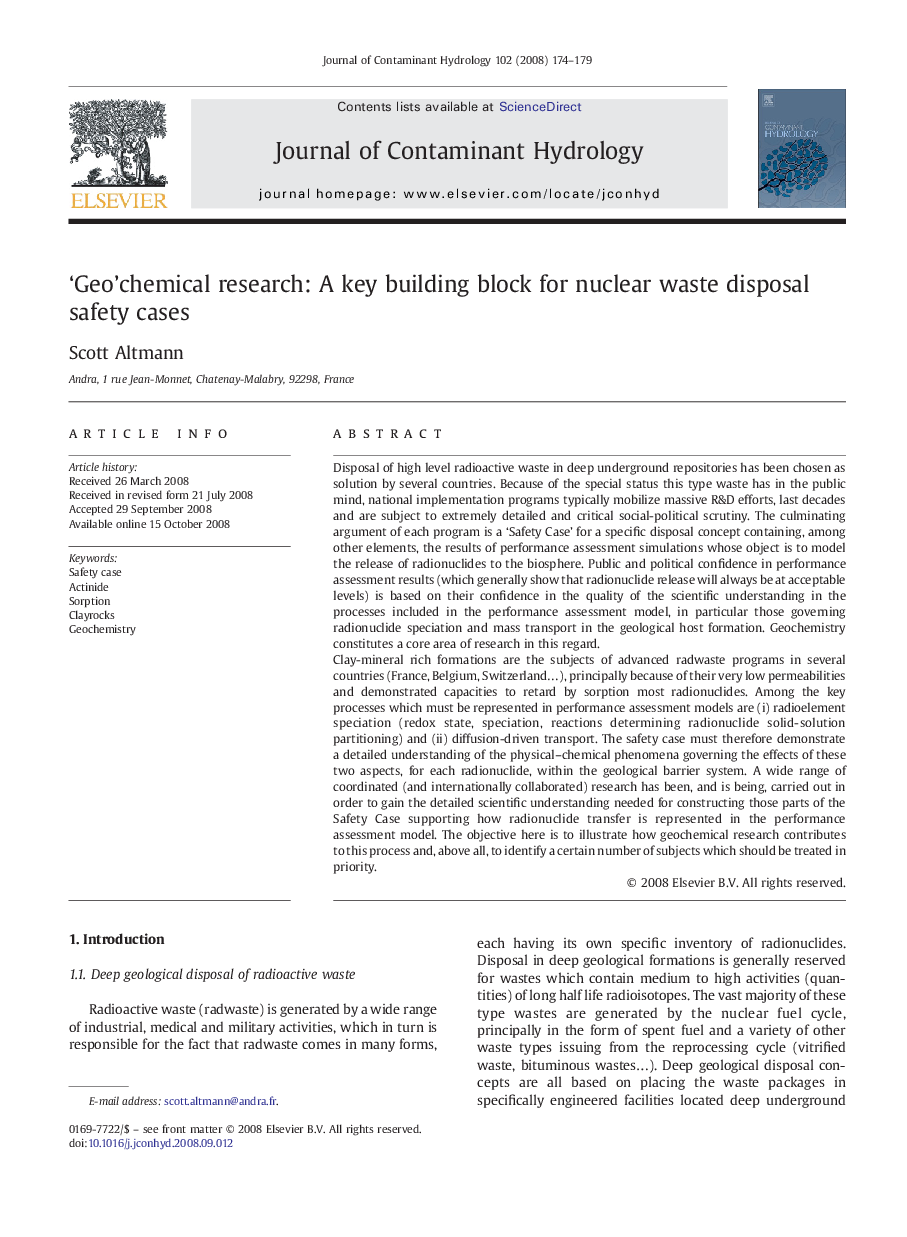| Article ID | Journal | Published Year | Pages | File Type |
|---|---|---|---|---|
| 4547295 | Journal of Contaminant Hydrology | 2008 | 6 Pages |
Disposal of high level radioactive waste in deep underground repositories has been chosen as solution by several countries. Because of the special status this type waste has in the public mind, national implementation programs typically mobilize massive R&D efforts, last decades and are subject to extremely detailed and critical social-political scrutiny. The culminating argument of each program is a ‘Safety Case’ for a specific disposal concept containing, among other elements, the results of performance assessment simulations whose object is to model the release of radionuclides to the biosphere. Public and political confidence in performance assessment results (which generally show that radionuclide release will always be at acceptable levels) is based on their confidence in the quality of the scientific understanding in the processes included in the performance assessment model, in particular those governing radionuclide speciation and mass transport in the geological host formation. Geochemistry constitutes a core area of research in this regard.Clay-mineral rich formations are the subjects of advanced radwaste programs in several countries (France, Belgium, Switzerland…), principally because of their very low permeabilities and demonstrated capacities to retard by sorption most radionuclides. Among the key processes which must be represented in performance assessment models are (i) radioelement speciation (redox state, speciation, reactions determining radionuclide solid-solution partitioning) and (ii) diffusion-driven transport. The safety case must therefore demonstrate a detailed understanding of the physical–chemical phenomena governing the effects of these two aspects, for each radionuclide, within the geological barrier system. A wide range of coordinated (and internationally collaborated) research has been, and is being, carried out in order to gain the detailed scientific understanding needed for constructing those parts of the Safety Case supporting how radionuclide transfer is represented in the performance assessment model. The objective here is to illustrate how geochemical research contributes to this process and, above all, to identify a certain number of subjects which should be treated in priority.
